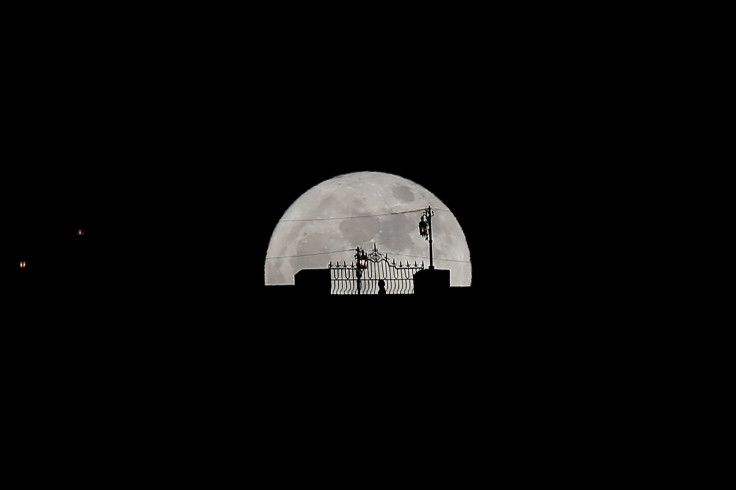Flower Moon: How To Watch The Final Supermoon Of 2020

KEY POINTS
- The fourth and last full supermoon of 2020 is set to rise May 7
- 'The Moon Illusion' makes for an optimal view of the supermoon
- Seeing the Moon close to the horizon makes it look bigger
The full Moon on Thursday morning will also be the last full supermoon for 2020. So, when is the best time to watch the full Flower Moon?
The term "supermoon" means the Moon, either new or full, occurs within 90% perigee or its closest approach to Earth. Typically, in a year, there are three to four full supermoons in a row and three to four new supermoons in a row. For 2020, the pattern for full supermoons began in February then continued on to March and April, which was the biggest full moon of the year.
This Thursday's full Moon will be the fourth and last full supermoon for the year. Also known as the Flower Moon, the Corn Planting Moon, the Milk Moon and the Vesak Festival moon, this month's supermoon will reach its peak early Thursday morning at 6:45 a.m. EDT and will appear full until Friday morning.
The May full moon was traditionally called the Flower Moon by the Algonquin people because the flowers are abundant at this time of the year.
The supermoon can easily be seen even without any equipment, but sky watchers may use binoculars to get a closer look at its craters.
While the supermoon may be much easier to spot than other sky events, there is a way to get an even better view by being in the right place at the right time.
'The Moon Illusion'
The best time to look at the supermoon, or any full Moon, is during the moonrise or moonset. This is because the Moon looks bigger and more yellow when it is closer to the horizon.
Called "the Moon illusion," it is an actual illusion that makes the Moon seem larger even if it's just the same size as it will be when it is high up in the sky.
According to NASA, there is still no scientific explanation for the Moon illusion, but it may have something to do with the way people perceive the size of things that are nearer or farther.
"It seems that our brains don't know that the Moon's distance doesn't change that much no matter where it is in the sky on a given night," NASA explained.
Another possibility is that objects such as trees and buildings that are close to the Moon in the horizon trick our minds into thinking that the astronomical body is closer and bigger than it actually is.
"But this isn't a perfect explanation, either. NASA astronauts in orbit also see the Moon illusion, and they have no foreground objects to act as distance clues. So, there's likely more going on," NASA said.
Regardless of the real reason why it appears larger when it is closer to the horizon, it is still one of the best ways to enjoy viewing the Moon, or, in this month's case, the last supermoon of the year. To do this, sky watchers simply need to check out the moonrise and moonset times in their location and reach a place from where they can view the phenomenon in the horizon with no obstructions.
The next full supermoon will be April 27, 2021.
© Copyright IBTimes 2025. All rights reserved.






















